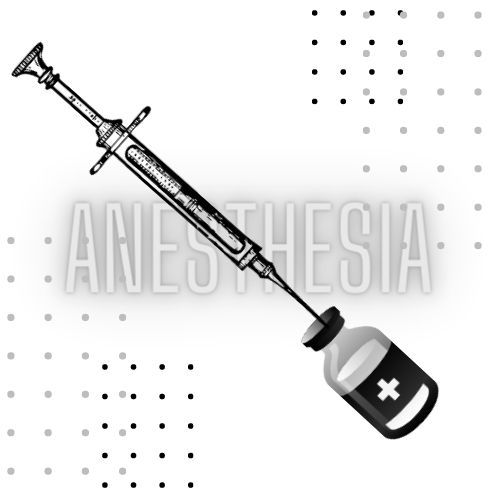Anaesthesia

As we all know, humans have a pretty decent pain tolerance. There was a time when we did not have anything to numb the excruciating pain you are, without a doubt, bound to feel. It was in 1846 that we found our solution, that we achieved one of our greatest victories in the history of medicine; Anesthesia. It was on October 16, 1846, that Dr Morton and esteemed surgeon John Collins Warren (who worked at the Massachusetts general hospital) made medical history by performing the first-ever successful surgery under the influence of general anaesthesia. Because of that, pain and surgery no longer went hand in hand. The fear of getting surgery slowly subsided, and many complications could now be corrected without the fear of pain.
As we all know, humans have a pretty decent pain tolerance. However, imagine that you are a person in the mid-1700s with perhaps a dislocated joint or something more painful. Then imagine sitting in the apothecaries office waiting to get it treated, and suddenly, he brings out a horrifying device to fix it. Now, remember, in this time and age, we do not have anything to numb the excruciating pain you are, without a doubt, bound to feel. Is there a way to fix this? Will the intelligent minds of the world find a solution?
It was in 1846 that we found our solution, that we achieved one of our greatest victories in the history of medicine. Humans had conquered pain. We managed to eliminate the debilitating fear of pain in operations and surgeries. Now let me introduce our saviour in our victory over pain; anaesthesia.
It is commonly accepted that general anaesthesia was invented in the mid-1900s, the exact year being 1846. It was invented by William T.G Morton, who was a young Boston dentist at the time of this endeavour. Before the invention of anaesthesia, dentists used nitrous oxide or more commonly known as laughing gas which is now used to sedate patients during minor medical procedures to help numb the pain during dental operations and surgeries. This was not as effective as required during longer and major medical procedures. These issues caused Dr Morton’s eagerness to find a more dependable solution to multiply.
It was on October 16, 1846, that Dr Morton and esteemed surgeon John Collins Warren (who worked at the Massachusetts general hospital) made medical history by performing the first-ever successful surgery under the influence of a general.
It was also then that Dr Morton single-handedly showed the world that ether is a gas, when used in controlled doses, is proper and effective anaesthesia.
Following this, many different I.V medications for anaesthesia were used. However, the one that gained the most popularity due to its shorter recovery period and multiple benefits, including the fact that it actually seemed to suppress laryngeal reflexes, was sodium thiopental introduced by Dr John Lundy (1894-1973) of Mayo Clinic. Propofol was introduced clinically in 1977, succeeding Dr John Lundy's sodium thiopental, as it demonstrated many positive qualities and benefits even as an antiemetic compound.
This ushered in a new era in modern medical history. After October of 1846, pain and surgery no longer went hand in hand. The fear of getting surgery slowly subsided, and many complications could now be corrected without the fear of pain as we entered a new age of information, where the framework of evidence-based medicine, newer fields of genetics, radiology, transplantations and even small stem cells quickly became a part of mainstream medicine.
Long gone are the days when we sat terrified at the apothecaries' office. In this time and age, the intelligent minds of the world did indeed provide us with a solution to numb the excruciating pain and debilitating fear.
We can all look forward to a very bright future in the progress of general anaesthesia.
References
Goerig, Michael, Kamayni Agarwal, and Jochen Schulte am Esch. "The versatile August Bier (1861–1949), father of spinal anesthesia." Journal of clinical anesthesia 12.7 (2000): 561-569.
Dote, Kentaro, et al. "Invention of Anesthesia: Why Was It Developed in the mid-19th Century?." Journal of Anesthesia History 4.1 (2018): 42.
Larson, M.D., 2011. History of anesthesia. Miller R, Pardo Jr MC. Basics of anesthesia. Sixth Edition. Elsevier Saunders, pp.3-10.
Finucane, B.T., 2007. Complications of regional anesthesia (pp. 211-223). New York: Springer.
Robinson, V., 1947. Victory over Pain, A History of Anesthesia. Anesthesia & Analgesia, 26(3), pp.62-63.
Robinson, D.H. and Toledo, A.H., 2012. Historical development of modern anesthesia. Journal of Investigative Surgery, 25(3), pp.141-149.
Author Biography
Mariyam Eshal is a 15-year-old ambivert in a constant state of wanderlust. She was lucky enough to come from the renowned boat-building island of the Maldives, R. Alifushi. However, she lives and learns in Hulhumale, Maldives. She enjoys reading (anything that catches her eye at that particular moment) and picking up new hobbies, only to abandon them halfway through. She has a great interest in learning history and musing over poetry but does not know what she wants to pursue in life except for a distinct want to study in the UK. Although, what to study, she does not know.

Cite this article as:
Mariyam Eshal Yoosuf, Anesthesia, theCircle Composition, Volume 2, (2022). https://thecirclecomposition.org/anaesthesia
